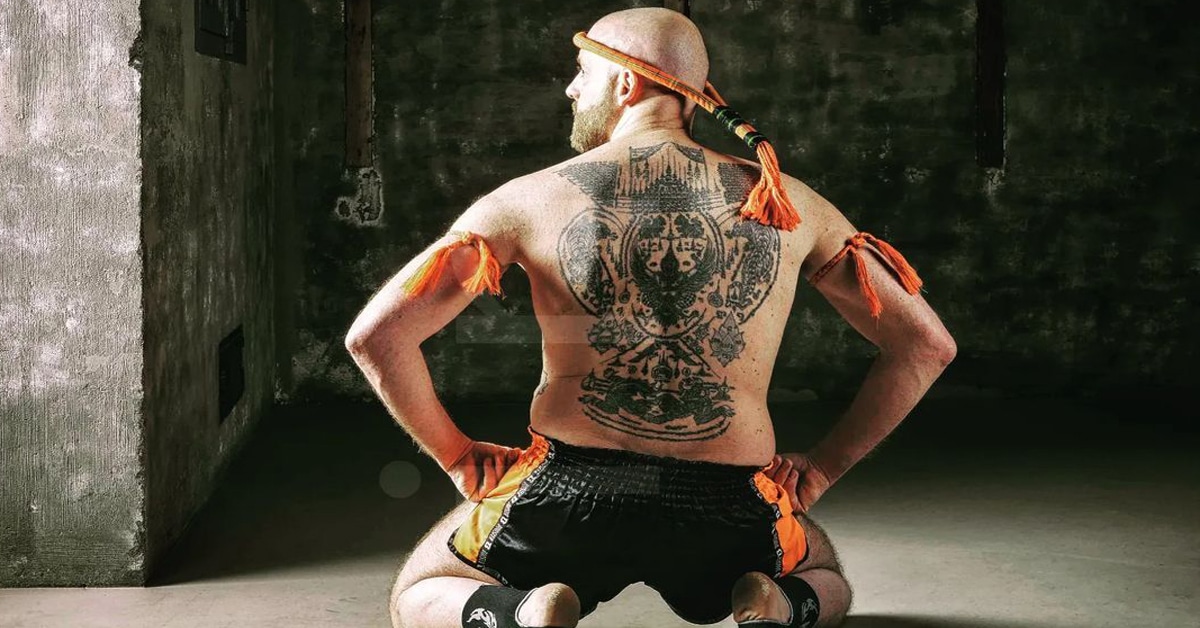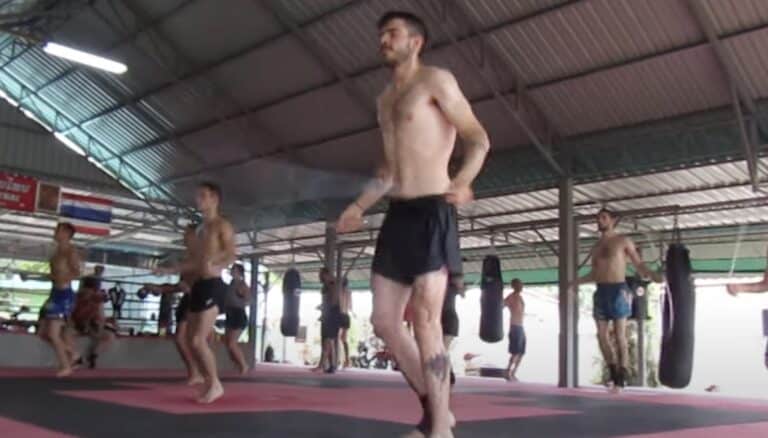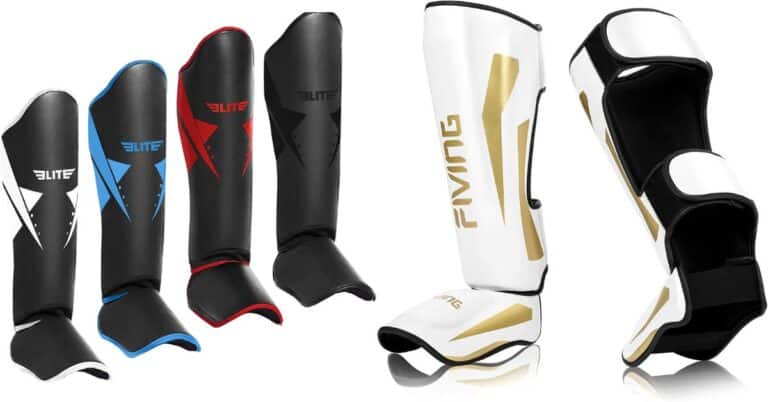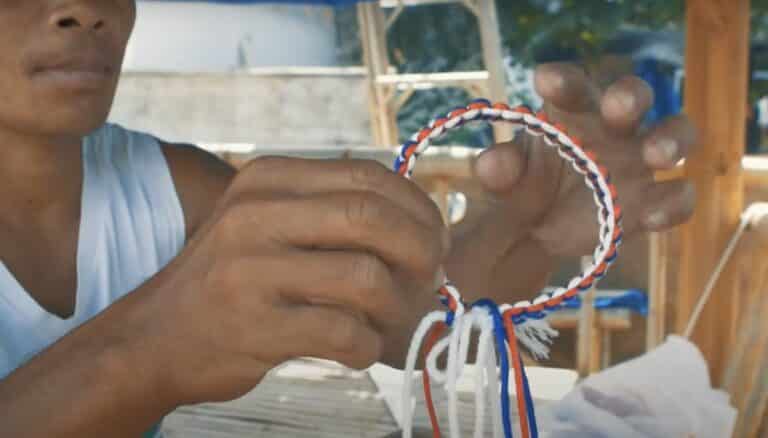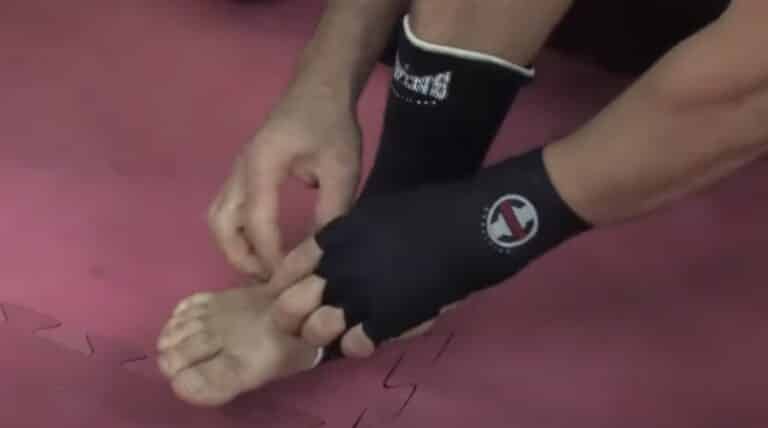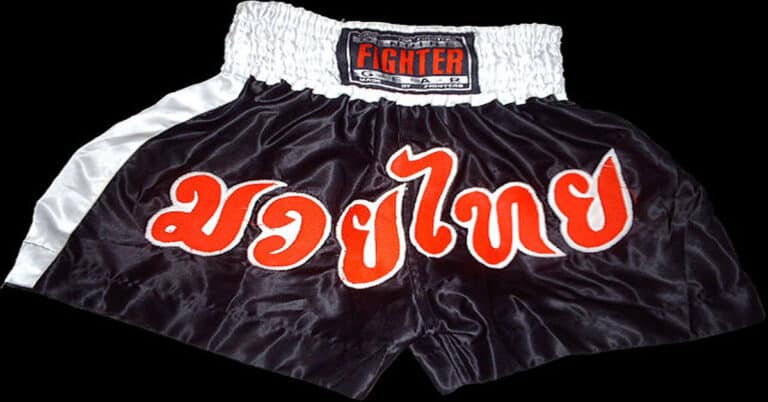Mongkon: Muay Thai Headband explained
The Mongkon, sometimes known as the Muay Thai Headband, is a piece of material Nak Muays wear into the ring before Muay Thai fights. It is closely connected to Thai Buddhism and is steeped in tradition.
The Mongkon is a highly respected Muay Thai braided headband that must be worn on the way to the ring and removed before the match begins. It is always blessed by Buddhist monks. It cannot touch the ground and people cannot step over them. It is meant to bring good luck to the wearer, will protect them in the match, and gift them strength.
It is a staple of modern Muay Thai although the tradition goes back hundreds of years and is related the Thai warriors.
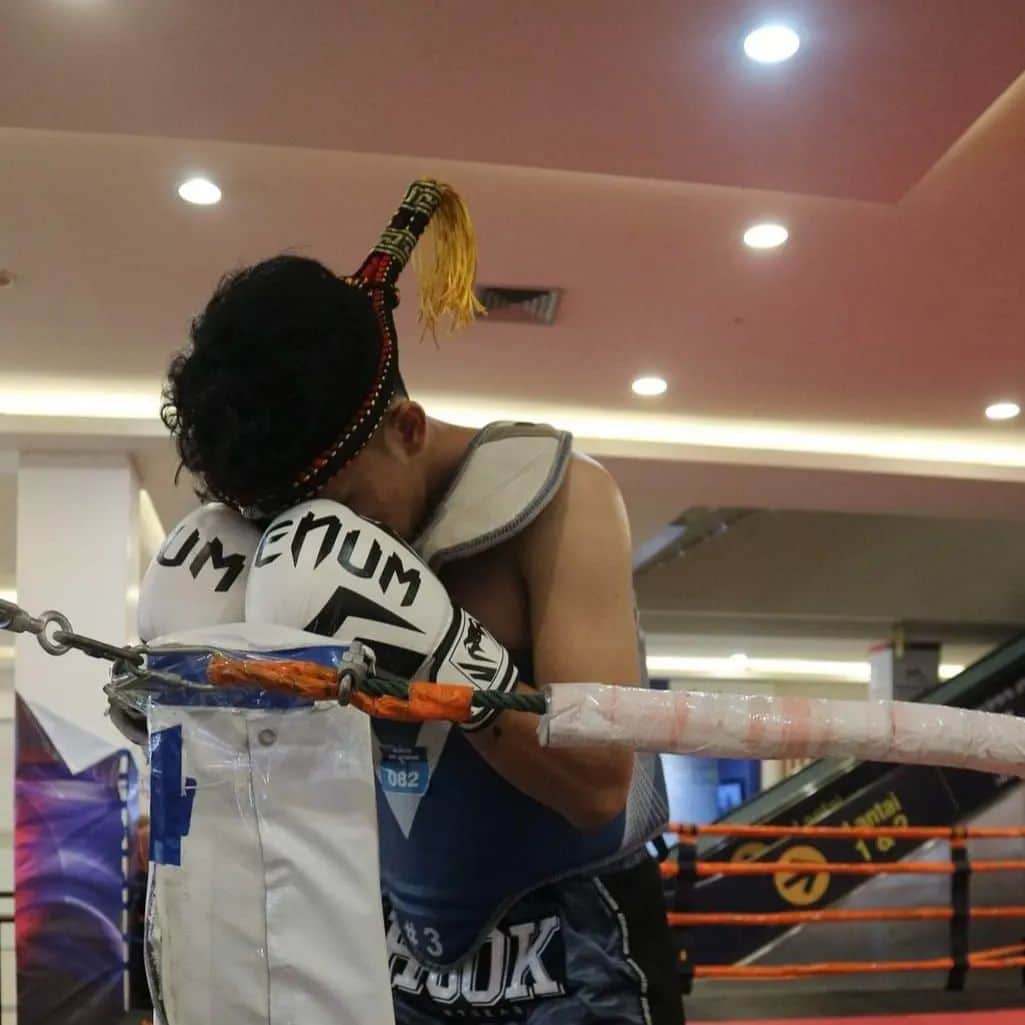
Wearing Mongkon Muay Thai Headband in the ring
The Pra Jiad, which is worn on the bicep, and Mongkon are linked to history and tradition found in Thailand and Buddhism. These items have become typical garments for fighters. Nak Muay athletes will also typically wear hand wraps, a groin guard, and trunks. Although, unlike the Pra Jiad and Mongkon, there are no sacred traditions associated with hand wraps, groin guards, or trunks.
Fighters may wear the Pra Jiad and the Mongkon Muay Thai headband to the ring and perform the Wai Kru while wearing these. The Wai Kru is a traditional Buddhist ceremonial dance which precedes every Muay Thai bout. It is a prayer to thank their trainers and family. Once the Wai Kru is complete, the Mongkon is removed and the fight can begin. Nak Muays are permitted to wear Pra Jiad, the armbands, during the bout.
The material is typically made from rope, braided cloth, or sometimes even silk. It is typically made by a member of the training facility or camp. The Mongkon Muay Thai Headband will sometimes have bones of a fighter’s ancestors added to it as a blessing. A more common practice is to have hair woven into it from a loved one.
Rituals and beliefs of the Mongkon Muay Thai Headband
Foreign fighters in Muay Thai, commonly called Farang, are recommended to wear a Mongkon, or Muay Thai Headband, to the ring even though they may not be Buddhist. It is a matter of respecting tradition.
The Mongkon Muay Thai Headband is a blessing of protection for the fighter. After it is constructed, it will then be blessed by a Buddhist Monk. People are asked not to step over the object and it cannot touch the ground.
While it is made from woven cloth or rope, it can be embellished with Buddhist symbols or charms. For Muslim fighters, it can include verses from the Quran. A prayer must be recited each time a Mongkon Muay Thai Headband is placed on one’s head or removed. Additionally, it can only be handled by the trainer.
Each training facility has its own unique tradition or Mongkons. Sometimes training partners will be happy to share their Mongkon. And other times each Mongkon will only belong to the individual.
The traditional purpose of the Mongkon, or Muay Thai Headband, is to bring good luck to the wearer, will protect them in the match, and gift them strength throughout their fight. Fighters may also use Pra Jiad or Sak Yants (Tattoos) to also help increase their luck and strength in the match.
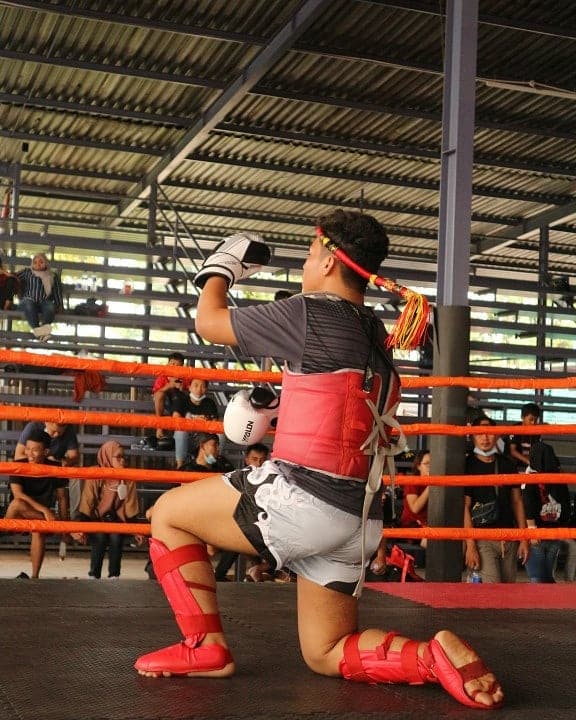
History of the Mongkon Muay Thai Headband
For hundreds of years, Siam (Thailand) was at constant war with its neighbors. Most notably the Kingdom of Burma. Fighters would practice the ancient form of Muay Thai, which is named Muay Boran. Muay Boran is a deadly hand-to-hand martial art which can be used on the battlefield or in the ring. Soldiers train weapons combat under the martial named Krabi Krabong.
Armed with Muay Boran and Krabi Krabong, soldiers would go off and fight on the battlefield. Traditions began to arise then which are still observed today. They would take a piece of cloth from a loved one, have it blessed by monks, and then wrap it around their arms before battle. This would come to the Pra Jiad in modern Muay Thai.
Similarly, soldiers would wear a cloth or rope circlet on their heads for protection. The headpieces were blessed by monks to bring them strength and good luck. This tradition has persisted for thousands of years and has become the modern-day Mongkon, or Muay Thai Headband, seen in the art of 8 limbs.
There was also a chant and prayer soldiers would say which was “Gam Baan Nak Muen” which means “The clenched fist weighing many thousands.” The chant was led by generals. This is speculated to have influenced the pre-fight prayer before Muay Thai matches led by the trainer to the student.
These traditions began with two thoughts in mind, be blessed by Buddhist monks for better protection, and bring a piece of home with them into battle. Hundreds of years on, these ideas still remain.
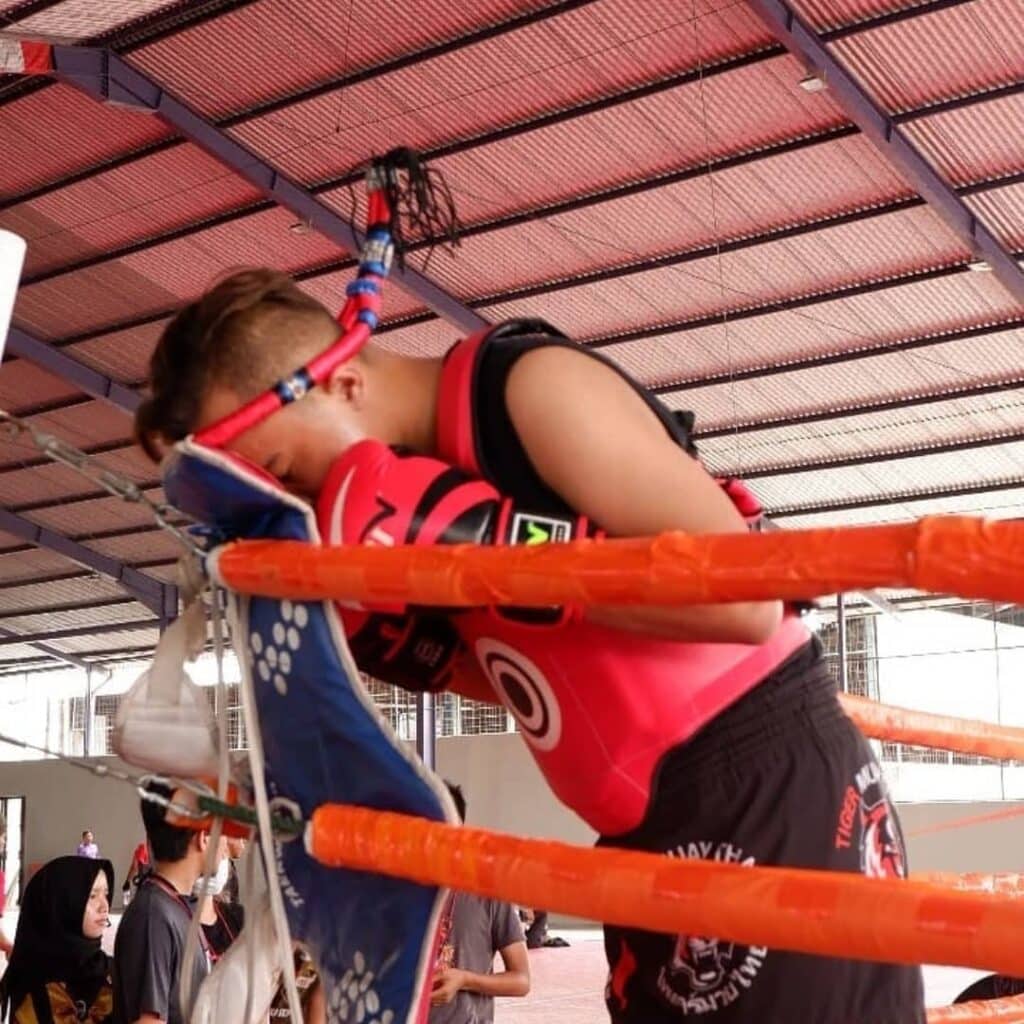
Nak Muays on Buddhism and Family Life
Nak Muays (Muay Thai Fighters) always keep home close to them when they fight. Honoring one’s parents is vital for a Thai-born athlete.
Reigning ONE Flyweight Muay Thai World Champion ‘The Iron Man’ Rodtang Jitmuangnon discussed how important his parent are to his career. While speaking in an interview, Rodtang said:
“My parents worked way harder than I have ever had to. I am indebted to them and want to repay what they did for us growing up. My mom taught me to fight for my life and to have a strong heart … I’m proud of myself for being able to take care of my family at such a young age. Whatever my mom wants to eat, I make sure she has it. Even though our life used to be hard, I’m grateful every day for my parents. I will never forget what they went through for us.”
Rodtang Jitmuangnon
Rodtang was able to fight to take care of his family as a child and now has enough means to have purchased them a house. With all of his worldly success, he still ensures his parents are taken care of. Today, Rodtang is a pound-for-pound kick in Muay Thai with an impressive record of 270-42-10 at merely the age of 25.
Similarly, former ONE Atomweight Muay Thai World Champion Stamp Fairtex discussed how essential her parents were to her Muay Thai career. With so many years in Muay Thai, Stamp ensures her parents are well taken care of. Speaking to ONE in an interview, Stamp explained:
“My parents did whatever they could to provide for us children. They would leave in the early hours of the morning, and come home late at night… They would work all day, just to feed us for that night… I realized through Muay Thai, I could not only provide for myself, but for my family also.”
Stamp Fairtex
Stamp Fairtex has earned world acclaim in Muay Thai, Kickboxing, and even MMA. She began fighting for her parents as a child and today has developed into a megastar.
Buddhism is still massively important and influential for the people of Thailand. It is tradition for boys in Thailand to spend two weeks as a Buddhist Monk. Muay Thai superstar Buakaw discussed his time as a Monk with MuayThaiCitizen. He explained
“I was able to fully immerse myself as a monk. During this period, my life was simple, revolving around performing chores, collecting alms, chanting, and Buddhist studies. If it weren’t for the prearrangement where I was already scheduled to fight, I would have liked to remain as a monk for a longer period of time.”
Buakaw
Additionally, people should look to Trainer Gae who spent much of his life as a monk. As a young man, he was a promising Muay Thai fighter until a leg break changed his life. Unable to compete, he became a Buddhist monk for ten years. Speaking to MuayThaiCitizen, Gae said:
“When I showed up at the temple, I only intended to enter monk-hood for 7 days. As a monk, you did little except for morning alms, partaking of food, temple chores and the rest of the time was spent in meditation. I experienced a lot of peace and so days turned into weeks, weeks turn into months. Before you know it, 10 years had passed.”
Trainer Gae
Trainer Gae would eventually find his way back to Muay Thai as a trainer. He is best known for his work with Anna ‘Supergirl’ Jaroonsak, Nat ‘Wondergirl’ Jaroonsak, Muay Thai prodigy Rodtang, and kickboxing great Superbon Singha Mawynn.
Buddhism and family are still a key aspect of any person’s life in Thailand. These traditions began hundreds of years ago and are still observed today. Every Siamese soldier on the battlefield went to war with thoughts of their home with armbands and headbands. And each Nak Muay enters the ring being surrounded by blessings from monks and their families.
The Mongkon, Muay Thai Headband, and Pra Jiad are reflective of Buddhism, family, and ancient Thailand. These traditions date back hundreds of years to when Thailand was at war. It has aspects of Buddhism. And it links a fighter to their family.

